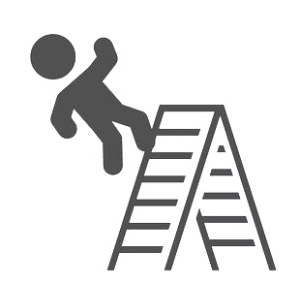By Dr. Ken Broda Bahm:
Witnesses who are new to the demands of deposition or trial testimony sometimes have the misperception that testifying is just a matter of getting past each question as it comes. Seeing it as a kind of a quiz, the witness thinks the examining attorney just has a collection of questions, each one more or less standing on its own. Viewed through the lens of that misperception, getting past a single question can seem like success. But that is a dangerous illusion. Instead of asking independent questions, the examining attorney will ask a series of questions linked together by a single goal. The early questions seem to be the easy ones, but they set the stage for harder ones later in the chain.
Here’s the way I often explain it to witnesses during preparation. The opposing counsel is trying to walk you up a ladder, rung by rung. When you get to the top, they’ll push you off. The typical witness will start fighting only when they realize they’re being pushed off the top of the ladder. But the better prepared witnesses will start fighting when they understand they are on the bottom rungs. In this post, I’ll provide a couple of examples, one good and one bad, of this process. Understanding how it works is key to either preparing the witness or being the witness who will make it as tough as possible for the opposing counsel to use this ladder trick based on prior commitments.
Let’s consider an example of a doctor defendant’s deposition.
The Bad Example: Concede the Early Rungs and Fight Only Later
Counsel: You keep complete notes on your patients, don’t you doctor?
Witness: Yes I do.
Counsel: Would you agree with me that part of the standard of care is to keep complete documentation on a patient?
Witness: Yes, that’s true.
Counsel: In fact, you probably learned in medical school that, ‘If it isn’t in the chart, then it didn’t happen,’ right?
Witness: Yes, I did.
Counsel: And in the case of this patient, you testified that you took a medical history of this patient, didn’t you?
Witness: Yes, that’s correct.
Counsel: But that is nowhere in the chart is it, doctor?
Witness: Well…now that I look at it, it doesn’t seem to be there.
Counsel: And you have already agreed with me that if you’d done it but not documented, that wouldn’t meet the standard of care, correct?
Witness: Well, we do try to document as much as possible, but there isn’t always time…
Counsel: So are you changing your prior testimony?
Witness: No, I’m not…but I’m sure I must have taken a medical history.
The problem here is that the witness does not start resisting until counsel is already drawing the adverse conclusion that the doctor is either wrong about his commitment to complete documentation, or wrong about whether he took a medical history. In other words, the fight only comes when the witness is at the top of the ladder and being pushed off.
The Good Example: Fight on the Bottom Rungs
Counsel: You keep complete notes on your patients, don’t you doctor?
Witness: We try to document thoroughly, and that means documenting a lot, but not necessarily everything that happens.
Counsel: But wouldn’t you agree with me that part of the standard of care is to keep complete documentation on a patient?
Witness: It depends on what ‘complete’ means. Anything that is unique or of concern is going to be documented, but it is impossible to document literally everything that occurs.
Counsel: Were you not taught in medical school that, ‘If it isn’t in the chart, then it didn’t happen?’
Witness: Yes, I was. But that is an aphorism, and it essentially means, ‘try to document as much as you can.’
Counsel: Now in the case of this patient, you testified that you took a medical history of this patient, didn’t you?
Witness: Yes, I did take a medical history of this patient. That is my standard practice.
Counsel: But that is nowhere in the chart is it, doctor?
Witness: In this case it is not. Sometimes that is documented and sometimes it isn’t. It is my standard practice to always take a medical history, so I am confident that I took one in this case.
Counsel: So despite what you said about trying to be as complete as possible, you left it out in this case?
Witness: It appears so. I believe that if there had been anything in that history that influenced my treatment plan, I would have documented that. So the fact that I didn’t tells me that, at the time, the patient shared no medical history that would have been relevant to the treatment plan.
So in this case it turns out much better for the witness because the resistence starts earlier. Instead of going along with the early questions, the witness begins drawing distinctions on the first rungs, and that makes all the difference later on. Opposing counsel still gets to make the point about a lack of documentation — you can’t change the facts — but the point is made without the witness making it worse.
This approach takes some practice, and at least a bit of sophistication. From the witness’s perspective, you don’t want to overthink the questions, or answer questions before they’ve been asked. But you do want to have a general awareness of where opposing counsel is going with a line of questions.
_________
Other Witness Tips:
- Safely Handle the “Safety Rule” Question
- Witnesses, Know When to Use Your Own Words
- Be Realistic About Hypothetical Questions: Four Ways to Answer
- Witnesses, Answer in a Full Sentence (10 Reasons)
_________
Image Credit: 123rf.com, used under license
